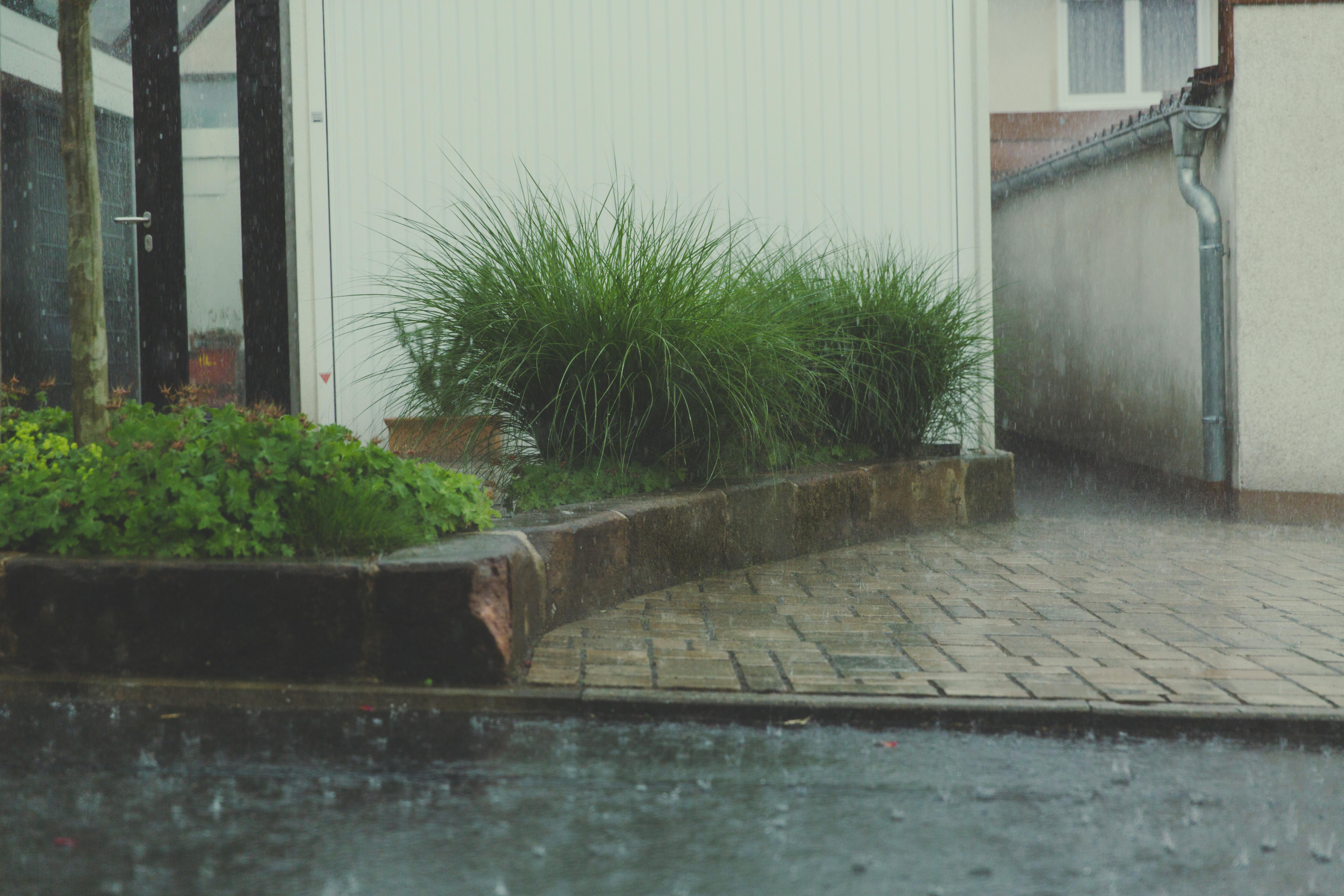Is Your Outdoor Area Ready for Wet Weather?
Wet weather can wreak havoc on your garden and outdoor space. Here’s how to prepare your home and reduce the risks before storms hit.

Wet weather isn’t just an inconvenience — it can be damaging. From waterlogged lawns and eroded soil to toppled trees and broken gutters, the effects of heavy rain and strong winds can add up quickly. And while we can’t control the weather, homeowners can take action to protect their outdoor spaces before the next downpour.
Here’s what you need to know to get your garden and outdoor areas ready for wet weather and why bringing in a qualified tradie from ServiceSeeking.com.au can help you stay ahead of the storm.
1. Clear Your Gutters, Pipes and Drains
One of the most important steps to preparing for wet weather is ensuring all gutters, downpipes, and drains are free from debris. Blockages can lead to overflow, which increases the risk of water damage to your home and landscaping.
Tip: Hire a professional to inspect and clean your gutters, especially if you’ve got a two-storey home or trees nearby. It’s a quick job for a tradie with the right tools and experience.
2. Check for Pooling and Fix Poor Drainage
Does water tend to collect in certain parts of your garden after a storm? Poor drainage can drown plants and damage structures over time.
Raised garden beds, gravel pathways, and properly designed trenches (or swales) can redirect water safely. A landscaper or drainage specialist can assess your site and recommend long-term solutions, especially if your block is sloped or prone to soggy patches.
3. Prune Trees and Secure Loose Items
Overhanging branches can break during storms, causing serious damage to roofs, fences, or powerlines. Likewise, unsecured items like outdoor furniture, pot plants, or trampolines can become projectiles in strong winds.
Quick actions:
- Prune back trees near your home or ask a tree specialist to handle riskier limbs.
- Store or anchor outdoor items securely.
 (Image source: Pexels)
(Image source: Pexels)
4. Keep an Eye on Local Weather Alerts
Stay informed. Monitoring updates from the Bureau of Meteorology, ABC Emergency, or your local council can give you a heads-up on incoming storms or flood risks. You can plan accordingly — or call in a tradie before the wet weather arrives.
5. Minimise Erosion with the Right Materials
Rain can easily wash away topsoil, mulch, and nutrients — especially on slopes or in exposed garden beds. You can prevent erosion by reinforcing surfaces with:
- Hessian and mulch to absorb shock and reduce splash.
- Bark mulch for steeper gradients to keep things in place.
- Hay bales stacked like bricks for a temporary barrier.
- Ground covers or grasses that bind the soil naturally.
Hiring a landscaper or garden maintenance professional to apply and secure these materials properly can make a big difference.
6. What to Do After the Rain
Once the storm has passed, there are a few simple checks to help your outdoor area recover:
Check for Flooding and Mud
- If mud is under 50mm, dig it back into the soil and add mulch.
- For thicker layers, it’s best removed and disposed of.
- Spread gypsum to break down sticky mud and improve soil texture.
Let Soil Dry Naturally
- Sandy soil dries faster than clay.
- Avoid working wet clay soil — it can become compacted and harder to fix.
A gardener or soil specialist can help assess damage and get your soil back into good shape, especially if you grow fruit or vegetables.
7. Revive Storm-Damaged Plants
Heavy rain and high winds can stress or damage trees and shrubs. Here's how to help them bounce back:
- Hose off mud from leaves so they can breathe.
- Scrape away caked mud around tree trunks to prevent collar rot.
- Prune back broken stems to encourage new growth.
- Add compost or organic wetting agent to rejuvenate tired soil.
If in doubt, speak to a horticulturist or arborist for advice specific to your plant species and local climate.
 (Image source: Unsplash)
(Image source: Unsplash)
8. Plan for the Long Term
Some changes today can reduce damage in future storms:
- Create raised beds or garden ridges to keep roots above flood level.
- Use permeable paths (like gravel or woodchips) to let water soak in.
- Install swales along slopes to slow water and help it sink in.
- Plant quick-growing grasses or shrubs to stabilise soil.
- Consider poly tunnels or hoop houses to protect veggies during heavy rains.
These are great projects to tackle with the help of a landscaper, gardener, or even a builder if structural changes are needed.
9. Safety Reminders for Post-Storm Cleanup
Before heading outside to clean up, make sure it’s safe to do so:
- Wait until weather warnings have cleared.
- Use gardening gloves to avoid cuts. Wet soil can carry bacteria like tetanus.
- Wear mosquito repellent, especially near puddles or standing water.
- Treat scratches quickly and don’t wade through floodwater unless necessary.
Tradies are trained to manage post-storm risks safely, so if you’re unsure about tree limbs, loose fences, or unstable structures, get help instead of handling it yourself.
Preparing your outdoor space for wet weather can save you time, stress, and repair costs. From ensuring your drainage is up to scratch to reinforcing garden beds and protecting your plants, there’s plenty you can do with the help of a professional.
Ready to get your home wet-weather ready? Whether it’s a landscaper, arborist, gardener or general handyman, find a trusted local tradie at ServiceSeeking.com.au and keep your home safe, dry, and looking its best—whatever the forecast.
